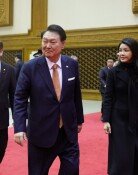Japan Imposes Korean DRAM Tariff
The Japanese government has decided to impose a 27.2 percent tariff on memory products produced by Hynix Semiconductors.
In a tariff rate deliberation meeting Friday, Japan decided to impose the tariff for five years beginning on January 27 on the grounds that Hynix has been dumping subsidized memory into the Japanese market.
In response, the Korean government will bring the case before the World Trade Organization. In addition, Hynix plans to file a lawsuit in Japanese court to seek compensation, raising the possibility of a potential trade dispute between the two countries.
Debt Restructuring Versus Government Subsidies-
Japan decided to levy the tariff because it interprets Koreas corporate debt restructuring programs as a kind of government subsidy. Korean financial companies provided financial assistance amounting to 10 trillion won through debt-equity swaps, rolling over maturity, and forgiving debts to help ailing companies survive the liquidity crisis between 2000 and 2002.
Elpida and Micro Japan, Japanese chip manufacturers, took Hynix to court in June 2004, claiming that those subsidies caused them damage. The Japanese government accepted these claims.
The Korean government disputed the court ruling, however, contending that it is unfair to regard a voluntary, creditor-initiated debt restructuring program as a government subsidy.
Hynix is also seeking compensation in the Japanese courts, calling the decision unfair.
Recently, Hitachi and Toshiba signed an agreement to build a plant to compete against Korean chipmakers, such as Samsung Electronics and Hynix, with support from the Japanese government.
WTO Ruling: 1.5 Years-
Hynix exported $560 million (506 billion won) worth of memory products to Japan in 2004, and holds 15.9 percent of the market share in Japan.
But a tariff 27.2 percent will cost Hynix $130 million in duty fees annually. It will also raise the price of 512 megabytes of DRAM to $6.36 from its current cost of $5.
Hynix believes that it can avoid the tariff, however, if it exports products from overseas manufacturing bases in China and the U.S., or OEM manufacturers in Taiwan.
It usually takes one and a half years for the WTO to make a final ruling. But Japans tariff will come into effect even after a nation brings the case before the WTO.







